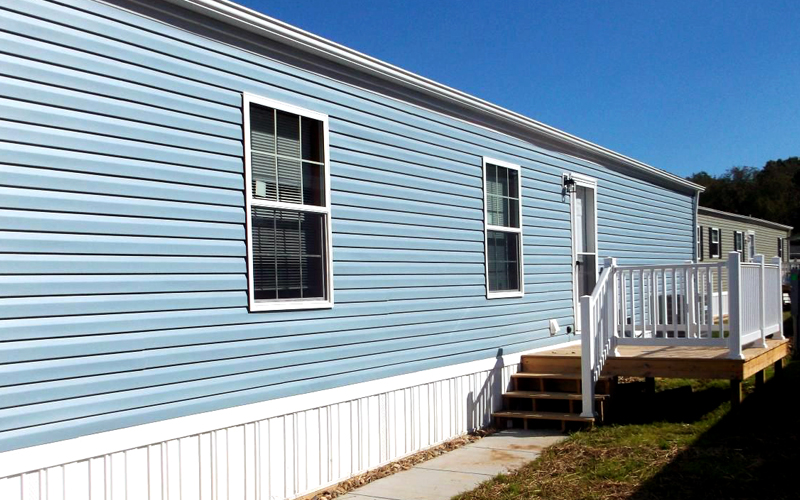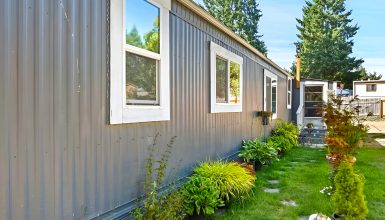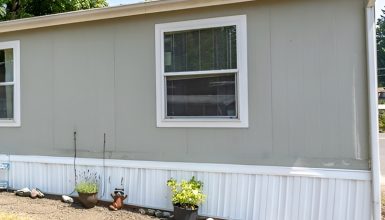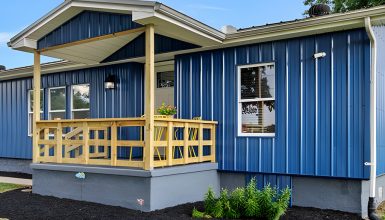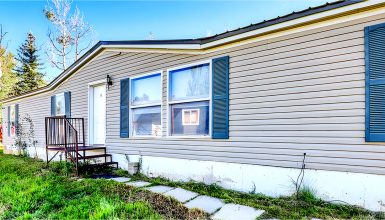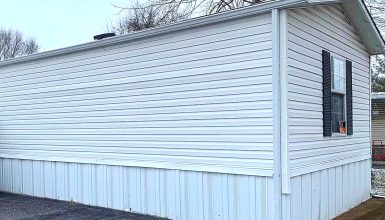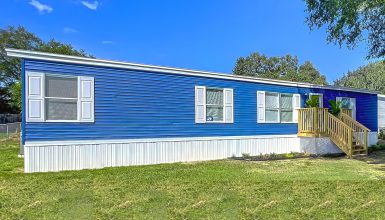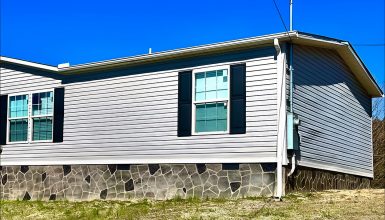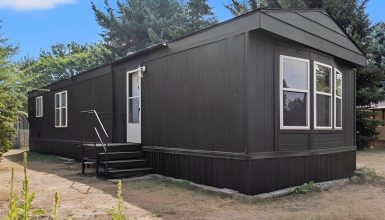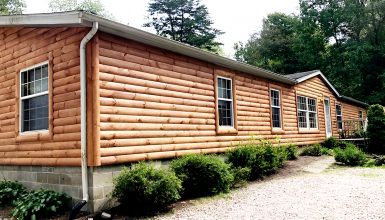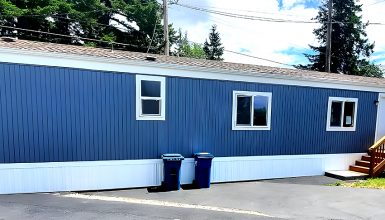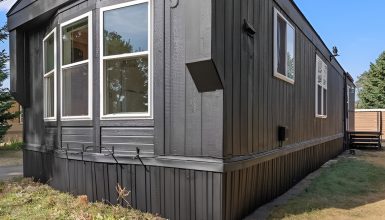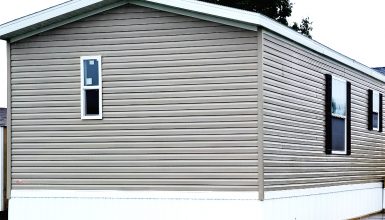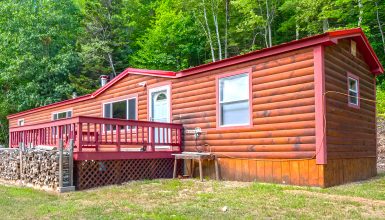Have you ever wondered how to upgrade your old mobile home’s exterior without breaking the bank or starting from scratch? Re-siding over your existing metal siding might be the answer you’re looking for! This approach offers many benefits that can make your home more comfortable, attractive, and energy-efficient.
First off, installing new siding directly over the old metal saves you time and money, as there’s no need to remove and dispose of the existing material. Plus, this method provides an extra layer of insulation, making your home cozier and reducing energy bills. And let’s not forget the aesthetic perks – vinyl siding comes in various colors, textures, and styles, allowing you to personalize your space truly.
Are you ready to discover how re-siding over a vertical metal siding can revolutionize your mobile home? Keep reading, and we’ll guide you through every step, from selecting the perfect vinyl siding to maintaining your home’s stunning new look.
Assessing Your Mobile Home’s Condition
Before we jump into the exciting world of re-siding, it’s important to take a good, hard look at your mobile home’s current condition. After all, a solid foundation is key to any successful makeover! So, let’s roll up our sleeves and dive into the nitty-gritty of assessing your home’s exterior.
- Inspecting the existing metal siding
First things first, inspect your existing metal siding for any damage, like rust, dents, or loose panels. Don’t forget to check for signs of water damage, such as mold, mildew, or peeling paint. Note any problem areas – you’ll want to address these before installing your new vinyl siding.
- Evaluating the structural integrity
Next up is evaluating your mobile home’s structural integrity. You’ll need to assess the frame, ensuring it’s in good shape and free of rot or warping. While at it, take a peek at the insulation and vapor barrier, ensuring they’re still doing their job.
Once you’ve thoroughly inspected your mobile home, it’s time to determine whether re-siding is a feasible option. If you find any serious issues, like extensive water damage or structural problems. You might need to tackle those first. But if everything checks out, congratulations! You’re one step closer to giving your mobile home the fresh, modern look it deserves.
Choosing the Right Vinyl Siding
Now that you’ve assessed your mobile home’s condition, it’s time for the fun part – picking out the perfect vinyl siding to give your home a fresh, updated look!
- Horizontal vs. vertical siding
First, let’s talk about the types of vinyl siding. You’ll need to decide between horizontal and vertical siding. While horizontal siding is more common, vertical siding can add a unique touch to your home’s appearance. It’s all about your taste and the style you’re going for.
- Insulated vs. non-insulated
Next, consider insulated versus non-insulated siding. Insulated siding comes with foam insulation attached to the back, which can help keep your home cozy and reduce energy costs. On the other hand, non-insulated siding is more budget-friendly and still offers a great-looking upgrade.
- Siding styles
Now, let’s dive into the world of siding profiles and styles. There are many options, like traditional lap siding, Dutch lap siding, board and batten, and more. Each type offers a distinct look, so take your time to explore the options and find the one that suits your mobile home best.
- Siding colors
When it comes to color and texture, the sky’s the limit! Vinyl siding comes in various hues and finishes, from classic neutrals to bold, eye-catching colors. Whether you prefer a wood-grain texture or a sleek, smooth finish, a vinyl siding option is right for you.
- Energy efficiency
Finally, don’t forget to think about energy efficiency. Some vinyl siding products are designed to help lower your energy bills by reducing heat transfer and improving insulation. Look for products with the Energy Star label to ensure you make a smart, eco-friendly choice.
Preparing for the Installation
Now that you’ve chosen the perfect vinyl siding, it’s time to gear up for installation. With some prep work, you’ll be on your way to a smooth and successful re-siding project. Let’s discuss the essentials you’ll need to prepare for your mobile home’s fabulous transformation.
- Gathering tools and materials
First, gather the tools and materials you’ll need for the job. Some must-haves include a tape measure, level, hammer, utility knife, tin snips, and a pry bar. You’ll also need siding-specific tools like a snap lock punch, a nail hole slot punch, and a siding removal tool. And, of course, don’t forget the star of the show – your chosen vinyl siding, along with any trim pieces and accessories.
- Securing permits and approvals
Next up, it’s time to secure any necessary permits and approvals. Check with your local building department to find out if you need a permit for your re-siding project. If you live in a mobile home community, get approval from the park management as well. Better safe than sorry!
- Establishing a timeline and budget
Now, let’s establish a timeline and budget for your project. Consider factors like weather conditions, availability of help, and any additional repairs you may need to complete before installing the siding. Set a realistic budget, considering the cost of materials, tools, and hired labor. Remember, it’s always a good idea to have a contingency plan in case any unexpected expenses arise.
Installing Vinyl Panels Over Vertical Metal Siding
Alright, it’s time for the main event – installing your fabulous new vinyl siding over the existing vertical metal! Let’s walk through the process step by step, so you can feel confident as you tackle this exciting project.
Step 1: Preparing the existing metal siding
First, you’ll need to prepare your old metal siding. Start by thoroughly cleaning it to remove dirt, debris, or loose paint. Next, address any damages you found during your initial inspection, such as rust or loose panels. You’ll also want to install furring strips or insulation boards over the metal to create a flat, even surface for your vinyl siding.
Step 2: Installing starter strips and J-channels
With your existing siding prepped and ready, installing the starter strips and J-channels is time. These pieces will help guide your siding installation and create a polished, finished look. Attach the starter strips along the bottom edge of your mobile home, and install J-channels around windows, doors, and other openings.
Step 3: Attaching vinyl siding panels
Now, the fun part – attaching your vinyl siding panels! Begin at the bottom of your mobile home and work up, cutting, and fitting the panels as needed. Use proper nailing techniques, allowing the panels to expand and contract with temperature changes. Remember, snug but not too tight is the name of the game.
Step 4: Installing corner posts and trim
You must install corner posts and trim as you work around the exterior. These pieces will give your siding a clean, professional appearance. So take your time to ensure they’re properly aligned and securely attached.
Step 5: Installing window and door trim
When it comes to windows and doors, you’ll want to install trim around the edges for a polished look. Seal gaps and openings to prevent drafts and moisture from entering your mobile home.
Finally, once all the siding is in place, it’s time to add any finishing touches and clean up. Stand back and admire your handiwork – your mobile home has been transformed into a modern, stylish retreat!
Conclusion
Well, there you have it – a complete guide to modernizing your older mobile home by re-siding over the vertical metal siding. We’ve walked you through the entire process. From assessing your home’s condition to choosing the right vinyl siding. And installing it to achieve that gorgeous, updated look. Thank you for reading!

